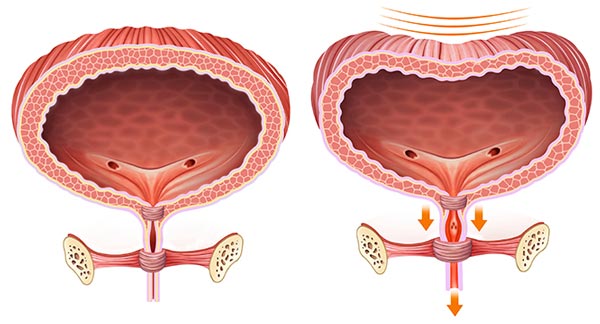Voiding Dysfunction
What Exactly Is Voiding Dysfunction?
Voiding dysfunction refers to a range of symptoms in otherwise healthy children, including urine frequency, urgency, and incontinence. These symptoms occur independently of urinary tract infections (UTIs); nevertheless, many children with voiding dysfunction may also have UTIs.
Bowel and bladder dysfunction (BBD) is a larger term used when the child additionally suffers constipation or fecal incontinence (poop accidents) in addition to the urine symptoms.

Who is affected by voiding dysfunction?
Voiding disorder may affect both men and women, most often between the ages of 4 and 16.
Causes of Voiding Dysfunction
- Infrequent urination. Some children tend to hold their urine during activities for fear of missing out.
- Inadequate urination. Some children do not fully empty their bladders because they do not take enough time or relax their pelvic muscles enough.
- Bladder contractions that are uncontrollable. Some children will have an urgent need to use the toilet.
- Constipation. Because the same nerves that innervate the colon also innervate the bladder, this may have a significant influence on voiding function. Anatomically, there is also a physical link. If there is a lot of stool in the rectum, it might cause bladder spasms and prevent the bladder from completely emptying.
What are the signs and symptoms of voiding dysfunction?
Symptoms include daytime wetting or leaking of urine, nighttime wetting when previously dry, recurrent urinary tract infections, pain with voiding without evidence of a urinary tract infection, urinary urgency, urinary frequency, stopping and starting urine flow, and/or straining to void or hesitancy to void.
Diagnosing Voiding Dysfunctions
- Renal ultrasound. A renal ultrasound is a noninvasive, painless examination that employs high-frequency sound waves to evaluate issues with a child’s kidneys, ureters, or bladder.
- Kidney, ureter or bladder x-ray (KUB). KUB x-rays are obtained for a variety of reasons, but in children, they often indicate constipation, which may lead to urine incontinence or aid in the detection of potential kidney stones. KUBs may be used by doctors to confirm an intestinal obstruction or the number of foreign particles in the stomach.
- Voiding cystourethrogram (VCUG). An x-ray examination of the bladder and urinary system is performed during a voiding cystourethrogram.
- Urodynamics. Urodynamic testing shows how the lower urinary system works.
What are the treatments for voiding dysfunction?
There are several treatments and therapies that may assist your child in regaining bladder control.
- Constipation treatment: A high-fiber diet, lots of water, and the use of a prescription laxative may help relieve constipation (which can accompany voiding dysfunction) and alleviate your child’s urine symptoms.
- Certain exercises may help strengthen the pelvic floor muscle, giving your child better control over their lower urinary system.
- Medication: Sometimes, prescription medicine can help relax overactive muscles.
- Behavioral modification: Encourage your child to drink lots of water and to urinate every 2 to 3 hours throughout the day.
For more information & consultation on Voiding Dysfunction, Get in touch with Dr. Adwait Prakash a Pediatric Surgeon in Indore. will help you out in understanding your problem and guide you through every stage of your treatment.
To book your appointment Call: 8889588832.
